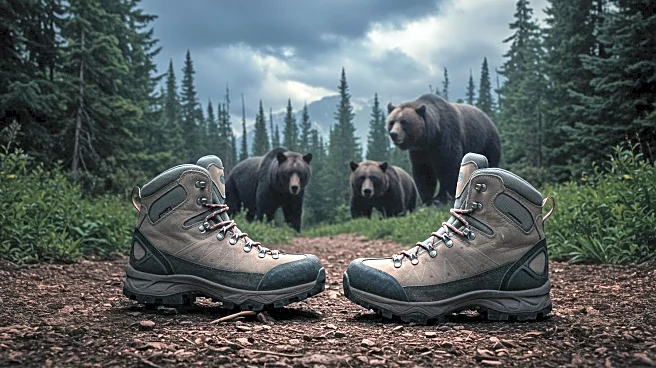What's Happening?
A hiker in his 20s was found dead in northern Japan after being attacked by a wild brown bear. The incident occurred on Mount Rausu in Hokkaido, where the hiker was reportedly dragged into the forest by the bear. Despite efforts to fend off the animal, the hiker succumbed to his injuries. Local authorities discovered a wallet and other personal items near the scene, and a bear was subsequently killed by hunters in the area. DNA tests are being conducted to confirm if this bear was responsible for the attack. This tragic event highlights a growing trend of bear encounters in Japan, attributed to factors such as climate change and rural depopulation.
Why It's Important?
The increase in bear attacks in Japan poses significant challenges for public safety and wildlife management. With a record number of human-bear encounters reported, the situation underscores the need for effective strategies to protect both people and bears. The shrinking human population in rural areas has allowed bears to reclaim habitats, leading to more frequent interactions with humans. This trend raises concerns about the safety of residents and tourists in affected regions. Additionally, the ecological implications of changing bear populations and their impact on local ecosystems are areas of concern for conservationists and policymakers.
What's Next?
Japan's government has already taken steps to address the issue by approving legislation that permits hunters to shoot bears in populated areas. However, further measures may be necessary to balance human safety with wildlife conservation. Authorities might consider implementing more comprehensive management plans, including public education on bear safety and habitat preservation efforts. The outcome of the DNA analysis will determine if the bear killed by hunters was indeed the one responsible for the attack, potentially influencing future wildlife management policies.
Beyond the Headlines
The situation in Japan reflects broader global challenges related to wildlife management in the face of climate change and human demographic shifts. As natural habitats are altered, wildlife species are forced to adapt, sometimes leading to increased human-wildlife conflicts. This case highlights the importance of developing sustainable coexistence strategies that protect both human communities and wildlife populations.











